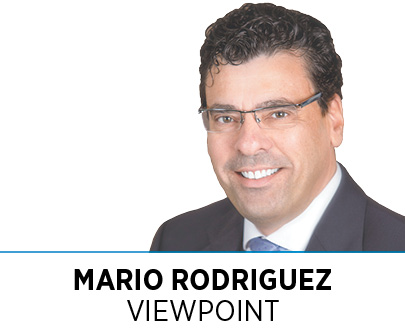Subscriber Benefit
As a subscriber you can listen to articles at work, in the car, or while you work out. Subscribe Now To rebuild from a pandemic that’s kept us apart, Indianapolis has to focus on coming together—reconnecting people and employers, neighborhoods to one another and our city to the world. Mass transit continues to be crucial to this challenge.
To rebuild from a pandemic that’s kept us apart, Indianapolis has to focus on coming together—reconnecting people and employers, neighborhoods to one another and our city to the world. Mass transit continues to be crucial to this challenge.
The Indianapolis International Airport is proud to be Indy’s “front door” to millions of travelers annually; we understand transportation and its impact. That’s why I support IndyGo’s plans for expanded transit service, with particular enthusiasm for the Blue Line bus rapid transit route from Cumberland to the airport.
With Blue Line planning in its final stages, I think back to 2014, my first year in Indianapolis: Today’s terminal had opened six years earlier, and we’d kicked off an eight-year run as the “Best Airport in North America.”
Indianapolis International was soaring as a crossroads for air travel and commerce. But we had an increasingly obvious problem on the ground.
Major employers like FedEx struggled with the lack of reliable public transportation to the airport. IndyGo trips routinely took hours to cover two or three miles from home to work. Indy’s state-of-the-art airport offered a stark contrast to its underfunded bus service.
I quickly learned that a coalition of business, civic and neighborhood groups was actively working to strengthen public transportation. Marion County voters approved dedicated revenue for transit in 2016. Today, IndyGo’s plans for more convenient routes, rider-friendly schedules and other service improvements are becoming reality.
Critical to the success of the revamped network are three bus rapid transit lines, offering frequent service with electrified buses in dedicated lanes. The Red Line opened in late 2019 and the northeast Purple Line will start construction this year.
But I believe the Blue Line can be most transformative. Bringing rapid transit service from the airport through downtown obviously enhances our appeal as a convention and hospitality destination. But the benefits to travelers are peripheral to the Blue Line’s overall potential.
The 24-mile stretch along Washington Street serves a corridor dense with people and employment; the three completed rapid transit lines will connect nearly a quarter-million residents and half the county’s jobs. Workforce accessibility is vital to our business climate, as companies invest in proximity to talent.
Thousands of the jobs served by the Blue Line are here at the airport, and the high-tech redevelopment of the former airport terminal site by Infosys. The India-based IT giant continues to grow across a 132-acre campus, now a cornerstone of central Indiana’s thriving technology sector.
The Infosys project reaffirmed my belief that the airport should aspire to move people and move the needle on economic development. The same is true of the Blue Line, designed to provide necessary service and unleash neighborhood redevelopment.
Rapid transit generates residential and commercial growth, and much-needed infrastructure investment ($40 million in planned road and sidewalk improvements along Washington Street and more than $200 million in improvements on all three lines). By spurring economic growth, the Blue Line will bolster the tax increment financing district around the former airport site, making more improvements possible. The project will attract population, including employees at Infosys, the new Elanco headquarters, and countless other growing businesses along the route.
IndyGo’s ridership is already starting to rebound from the pandemic. We can’t afford to slow our investments in rapid transit service, such as the Blue Line, which is an important piece of our blueprint for a more connected, competitive, post-COVID economy.•
__________
Rodriguez is executive director of the Indianapolis Airport Authority.
Please enable JavaScript to view this content.

Thank you Mario for an assertive and forward-thinking commentary. There are few better investments a community can make than in its infrastructure. This approach to improving economic development should be welcomed by employers and their potential workers. The Blue Line has the potential to provide improved access to jobs and in the donut counties and to restaurants and entertainment downtown.
This project will also have a significant effect on improving access to healthy food for our inner city residents.
Covid-19 has increased the pressures in our more challenged neighborhoods. Our response needs to include community-focused measures that raise all boats. The Blue Line is just such a project.
Thank you Mario! The Blue and Red lines would save me about $120 every time I visit Indianapolis based on the roughly $60 cost to get to Nora via Uber/Lyft. The airport needs rapid tranist to make Indianapolis a better convention destination as well. Look at Denver for example.
Edit: Didn’t want this as a reply to Cal’s post. I agree 100% with Cal’s post.